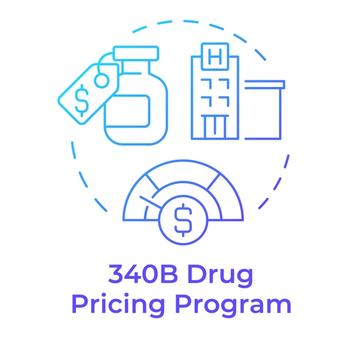
Analysis Finds Biosimilars Can Reduce Total Cost of Care
A simulation study estimated the impact of biosimilar substitution on total cost of care and provider financial performance in the final performance period of the Oncology Care Model.
Utilization of biosimilars instead of reference products could significantly lower total cost of care (TCOC) per episode in value-based payment models, according to a study
The analysis estimated the impact of biosimilar substitution in a six-month episode of care as defined in the Oncology Care Model (OCM). Medicare’s OCM was the largest value-based payment model to date, operating from 2016 to 2022,2 and had significantly influenced oncology payment reform in the United States, the researchers noted. The OCM also informed the design of Medicare’s current Enhancing Oncology Model, which started in July 2023.3
The lower cost but equal efficacy of biosimilars compared with the reference product makes them important for success in oncology value-based payment models. With biosimilars currently approved in the United States for bevacizumab, epoetin alfa, filgrastim, pegfilgrastim, rituximab, and trastuzumab, “biosimilars may be applicable in a large proportion of care episodes in oncology, and thereby could prove to be critical tools to manage TCOC and reduce provider risk of paying recoupments for exceeding TCOC benchmarks or quality standards set by [value-based payments],” the authors wrote.
They used Medicare claims data and simulation techniques to estimate the potential impact of substituting biosimilars on TCOC and provider financial performance during the last performance period of the OCM.
Of a total population of 3,296,240 beneficiaries, there were 8,281 episodes of care with cancer treatments, with 19.2% of episodes meeting the criteria for biosimilar product use and potential OCM eligibility. Most of the episodes were breast cancer (19.4%), lymphoma (18.5%), lung cancer (12.9%), prostate cancer (6.5%), pancreatic cancer (5.3%), and ovarian cancer (4.9%).
About half of the study population had used a biosimilar cancer treatment, 66.0% had used a biosimilar supportive therapy, and 16.0% had used both. Use of both treatment and supportive therapy was most frequent in lymphoma, at 37.8% of episodes.
There was a $1,193 reduction in total cost of care per episode, which represented an average 2.4% reduction in total cost of care compared with the aggregate benchmark for the cohort. Of the simulated cohorts, biosimilar substitution led to a reduction in total cost of care in 9,996 of 10,000 relative to benchmark.
In the 10,000 simulations of use of reference products only, 4,440 had total cost of care that resulted in owing performance-based recoupments. Of those, 1,340 simulation runs reduced total cost of care so providers would neither owe money nor receive money when there was alternative use of biosimilars. In 4.3% of the 4,440 simulation runs, biosimilar use reduced total cost of care down enough that providers would earn a payment.
Overall, 38.9% of cohorts using reference only were under target and would earn a payment compared with 55.2% of cohorts substituting biosimilars.
One of the limitations of the study is that in using the OCM for the analyses, the results may not be generalizable to other value-based payment models. The models also assumed providers would substitute biosimilars for all reference products that had a biosimilar available, and the economic impact will differ based on adoption strategy. Also, using pricing available during OCM’s final performance period in the second half of 2021 might underestimate future impacts of biosimilar substitution since biosimilar prices tend to decline as time goes on.
“Our findings can inform strategy for oncology providers attempting to manage TCOC while using biologic therapies in the context of value-based payment models in the USA,” the authors concluded.
References
1. Yang J, Chaudhry BI, Yue AT, et al. The impact of biosimilar use on total cost of care and provider financial performance in the Medicare Oncology Care Model: a population-based simulation study. Adv Ther. 2023. doi:10.1007/s12325-023-02703-x
2. Caffrey M. CMS announces OCM successor, but gap year remains for oncology practices. The American Journal of Managed Care® website. June 27, 2022. Accessed November 17, 2023.
3. Caffrey M. Final tally lists 44 practices in EOM, but it’s complicated. The American Journal of Managed Care website. July 12, 2023. Accessed November 17, 2023.
Newsletter
Get the latest industry news, event updates, and more from Managed healthcare Executive.





















































